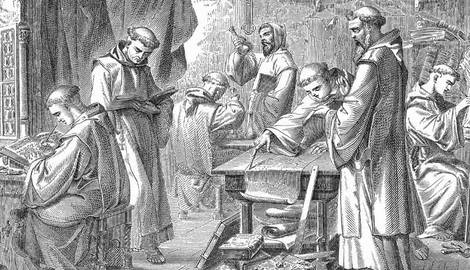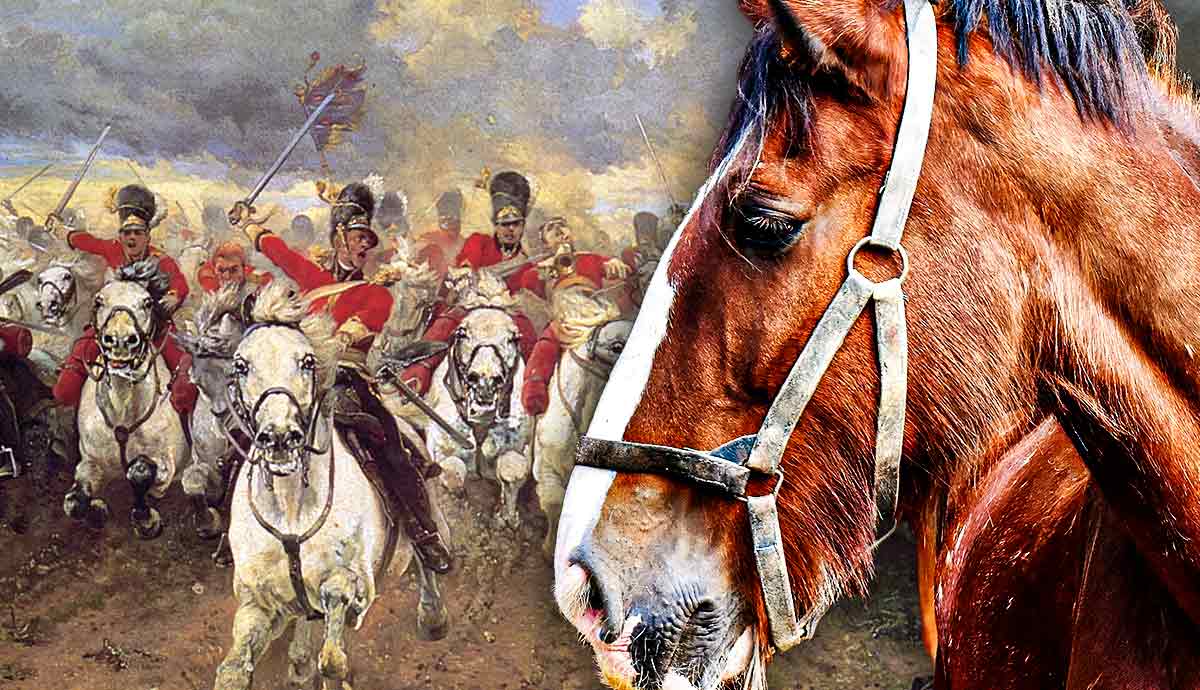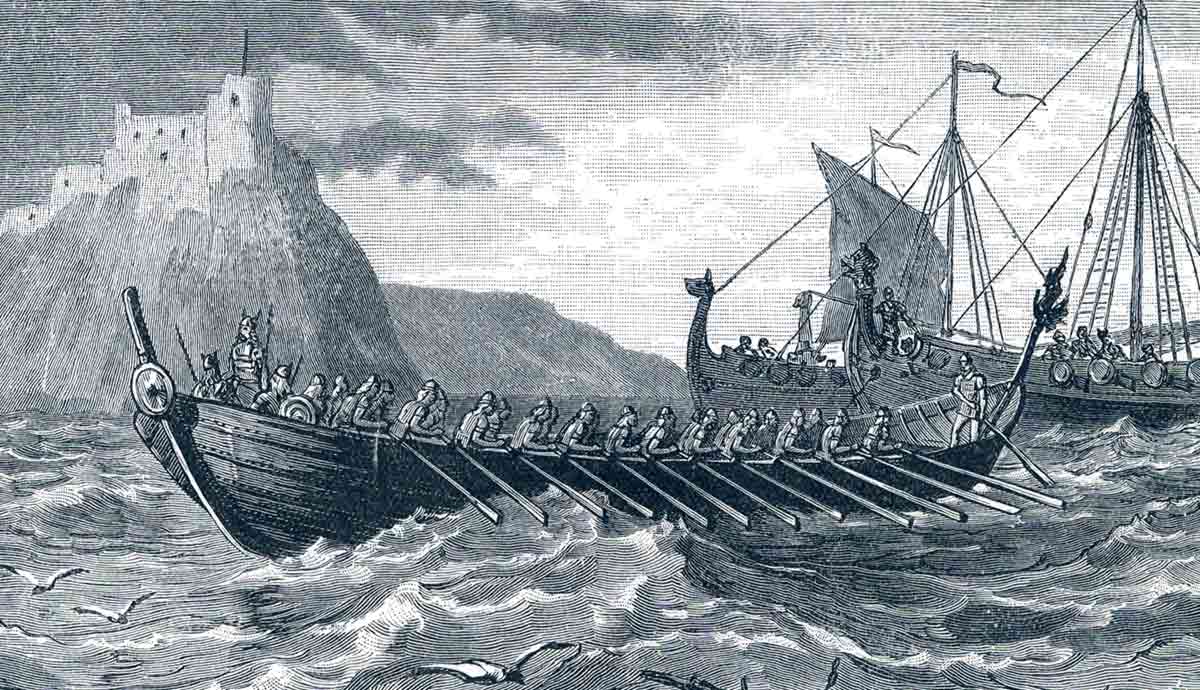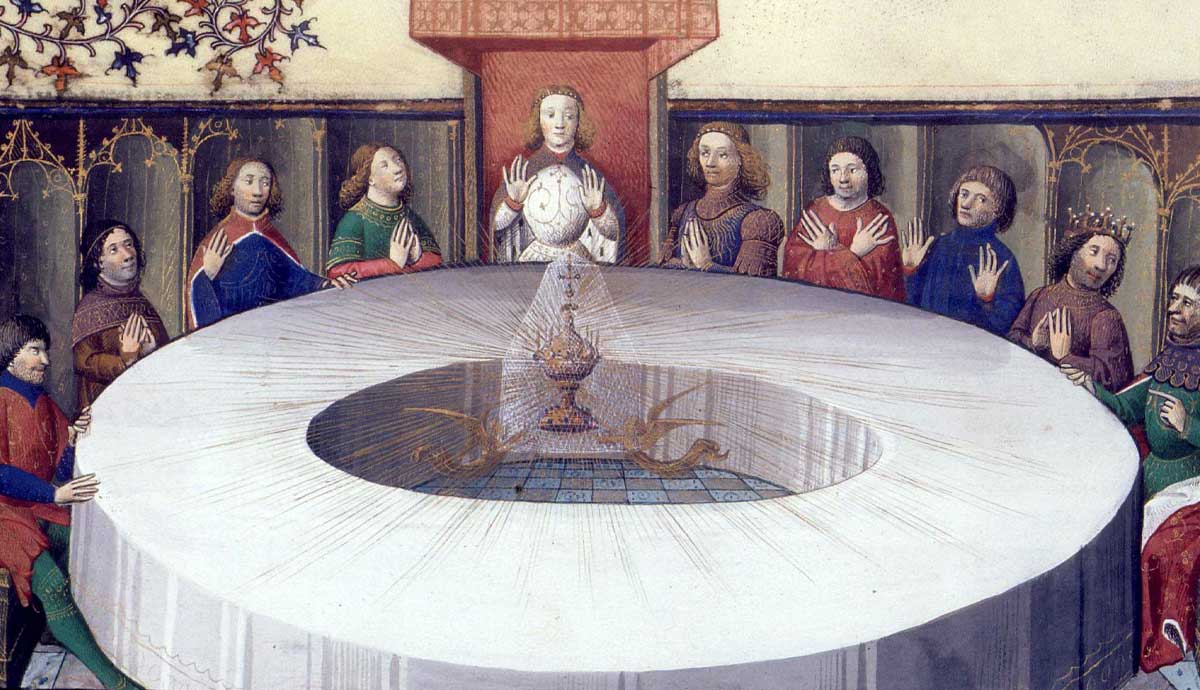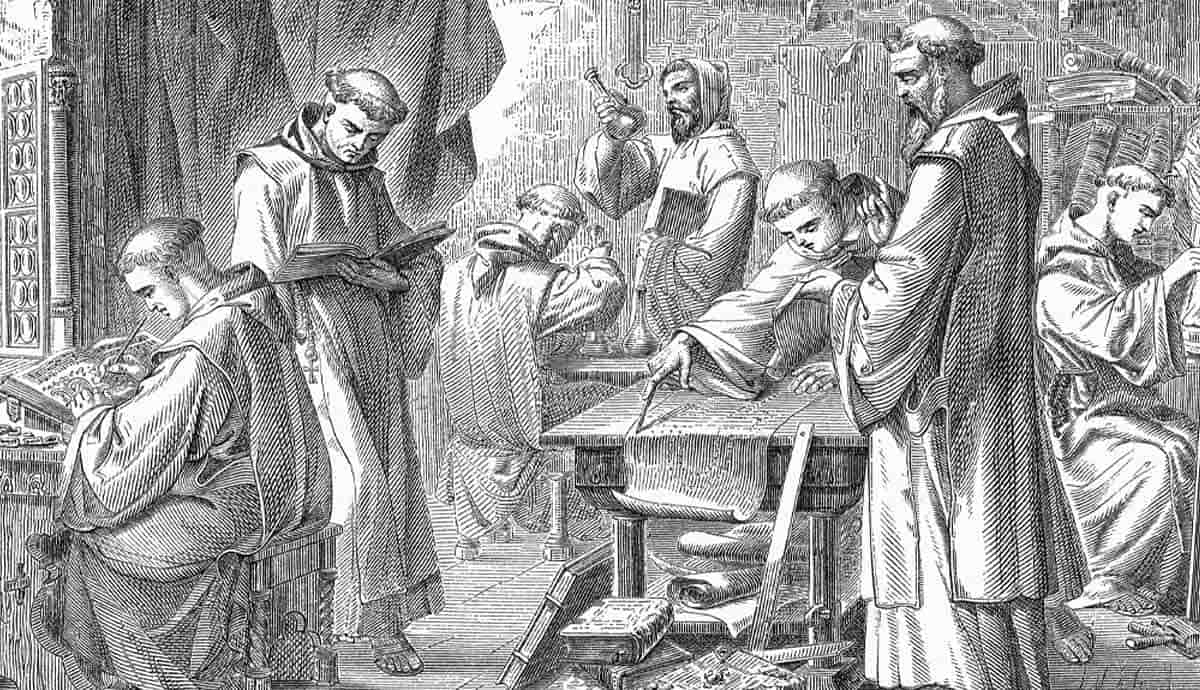
Spending their lives in monasteries, devoting their entire lives to God, monks in the Middle Ages experienced a quiet existence in a world with a growing sense of religious importance that valued the monastic life.
Not only did they devote themselves to God, but they devoted themselves to their communities. Despite their seemingly introverted lifestyle, monks had a profound influence on Medieval society and played a significant role in the culture of the time.
A Note on Monks and Friars

Although used interchangeably in common parlance, there is a difference between monks and friars, historically and canonically.
Monks were, and still are, members of monastic orders that emphasize spiritual contemplation. They focus on living a quiet life of reflection. Friars, on the other hand, take a more active role in society, preaching, healing, and often traveling far and wide in their pursuit of aiding people around them.
Why Choose a Life in the Monastery?

In the Middle Ages, several reasons led boys and men to choose a monastic life. For many, it was a desire for spirituality, while for others, it was a need for learning and education. Others desired the social and economic status that came with being a monk. For young boys, sometimes it was not a choice, but a duty imposed on them by their parents.
For those of the lower classes, becoming a monk was often a way out of poverty, and while it was not uncommon for this to happen, higher positions such as prior, provost, or abbot were generally occupied by those of noble status. In theory, the monastic orders were open to people from across the social spectrum (including women, who could become nuns), but theory and practice often did not sit well with each other. There was still the influence of the social elite, with nepotism and patronage swaying the decisions of religious authorities.

Joining a monastery involved a number of important steps, the first of which was postulancy—a period of observation usually lasting upwards of a month. During this time, candidates lived in the monastery and experienced monastic life to determine if it was truly the right path for them. Upon deciding this was something they wished to continue, they became a “Novitiate,” and took a Vow of Obedience, swearing to obey the abbot (or abbess in the case of nuns).
Novitiates spent a year in training, learning about the spiritual life, after which they would take a vow, swearing to uphold a life of poverty, chastity, and obedience. Novitiates spent time “Learning the Rule,” internalizing the principles of their religious order. For most monks, this was the “Benedictine Rule,” which emphasized, among other things, obedience, silence, community, humility, and devotion to God.
A Life of Routine

A day in the life of a medieval monk is ruled by the Liturgy of the Hours, which structures the day into periods of prayer. Praying at fixed times followed Jewish tradition, and in the 6th century, St. Benedict of Nursia codified the practice in his Rule for Monasteries. The day was split into eight canonical hours, which varied in length. Matins was the longest of the hours, lasting from midnight until dawn. This was followed by Lauds, Prime, Terce, Sext, None, Vespers, and Compline.
There was much work to be done at monasteries, and monks involved themselves in various activities. Caring for the monastery’s animals, crops, and other resources was of paramount importance. Monks were involved in various crafts, which differed from monastery to monastery. Carpentry, sculpture, brewing, gardening, baking, masonry, weaving, writing, and a host of other activities were common.
Work wasn’t just for the survival of the monastery. There was a deep spiritual connection between monks and the work they did. It was complementary to prayer and study, and it instilled ascetic discipline on the way to salvation. Work wasn’t always the same, but it was broken up every day at exact times for prayer, meals, and meetings. There may have been a variety, but the path to God was rigid and strictly adhered to.

One of the major pursuits was copying manuscripts in the scriptorium. Before the invention of the printing press in 1440, all books were copied painstakingly by hand, and this was done by very patient monks in monasteries, which also served as centers for the preservation of knowledge. The pace was slow, and monks spent countless hours creating illuminated manuscripts, books that were as much works of art as they were vessels for knowledge. Unsurprisingly, monks spent a lot of time reading and engaging in academic pursuits.
Mealtimes were usually silent affairs, and the food was simple, reflecting the austere virtues of monkhood. Sleeping arrangements were mostly communal, and rest was often interrupted by night vigils, which consisted of prayer, meditation, and reading from Scripture.
Religious Duties

Much was expected of monks in their duties, and those who failed to adhere to them to satisfactory levels often faced reprimands and penance. Of course, the severity of the infraction determined the punishment, and monks could be excluded from religious activities. More severe penance could take the form of flagellation, fasting, manual labor (the non-enjoyable kind), and being forced to sleep on hard surfaces without blankets.
Duties were assigned through daily Chapter House meetings in which monks also had the opportunity to confess their sins.

Monks had duties to both their fellow monks within their order and to the people in their community. In addition to caring for those within their order, monasteries often existed in lieu of hospitals, and people from all walks of life were treated by monks for medical ailments. Their duties were charitable, and they offered shelter to travelers, fed the hungry, and provided care for orphans and the elderly in society. Of course, they also offered spiritual guidance to those who sought it. Scholarship and manual labor also formed part of the monk’s duties.
Some monks could also hear confessions and dictate penance, although this was usually done by a parish priest. Once a public ordeal, the practice of confession being a private affair gained traction, especially in Ireland, from where the tradition spread. Penance could also be observed in private.
Other duties involved veneration of the saints, and of icons and relics. Relics were the subject of minor actions such as kissing, bowing, and making the sign of the cross. It was important for monks to recognize holy symbolism and treat it with the utmost respect.
How Did Monks Influence Culture and Society?

One of the main factors in monastic life and the surrounding society was the financial aspect. Monasteries often engaged in trade and sold the products they made, whether it was furniture, food, wool, or booze. As mentioned previously, monasteries were centers of learning, and monks advanced the academic pursuits, becoming worldly and knowledgeable in their quest for learning. Naturally, monks also developed and ran schools and libraries. In some cases, these monastic and cathedral schools evolved into universities, and many universities still in existence today in Europe can trace their founding back to religious orders and religious learning.

Monasteries represented relief from the vagaries and challenges of Medieval life. They were islands of calm in seas of chaos, and the monks who lived in them acted as such. They welcomed pilgrims and actively engaged in charitable causes, readily giving to the poor and the needy. Monks provided much good for society. They took up the mantle of learning and teaching, preserving texts—both religious and non-religious—thus acting as conservators for Western Civilization, still reeling from the collapse of Rome.
Monks were also great patrons of the arts and made huge strides in promoting art and architecture in Medieval society.
In the higher offices of the clergy, abbots often acted as advisors to lords and kings. This was not unusual given the fact that monasteries could be extremely wealthy with plenty of land. As such, leaders of monasteries sometimes had great political influence.

The life of a monk was one of quiet contemplation and hard work, and was one of intellectual as well as physical pursuits. Monasteries represented order in a seemingly chaotic world outside, and were thus seen as a refuge not just for monks, but for ordinary people who sought the divine protection that monasteries and monks could give.
Far from being humble recluses, however, monks who sought it out could find themselves wielding significant power. Monasteries were dynamic places that had a great influence not just within their walls, but also on the world around them. Able to inform public opinion, and having the ears of nobles and monarchs, some monasteries molded society in their image, contributing to popular thought, religious belief, academia, and the economic landscape of the Middle Ages.
